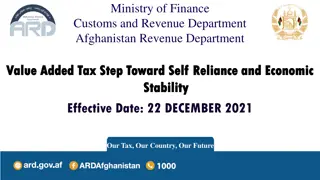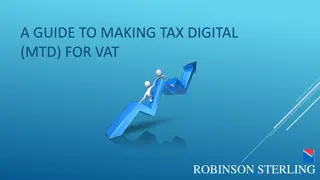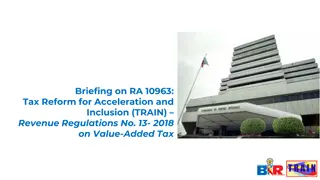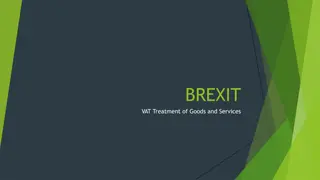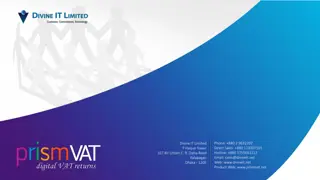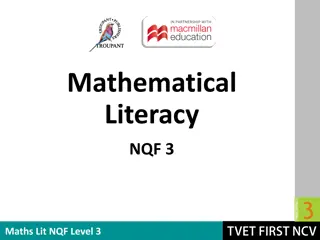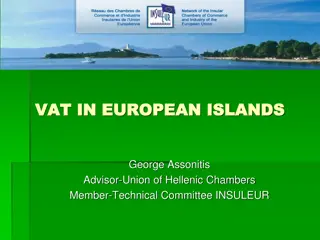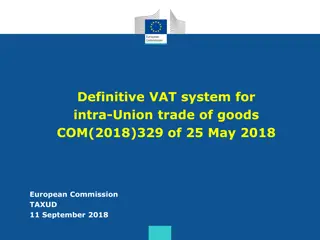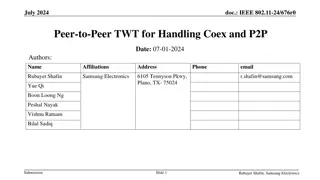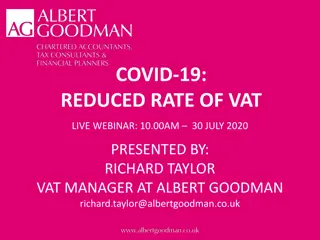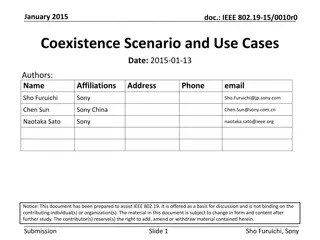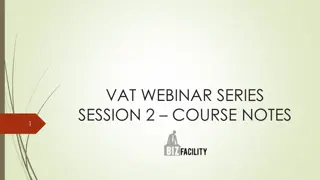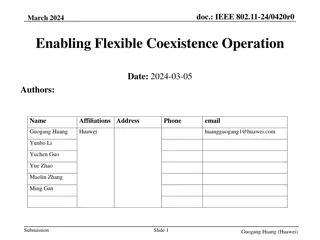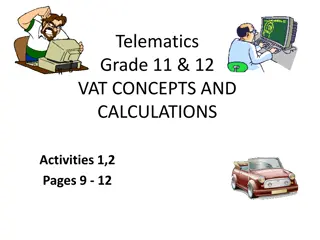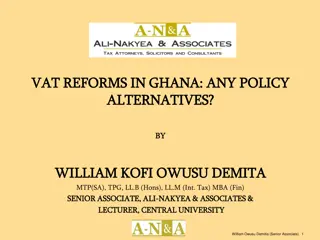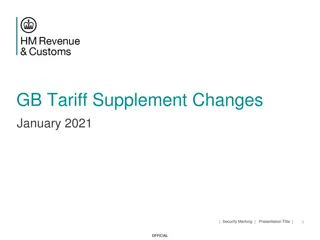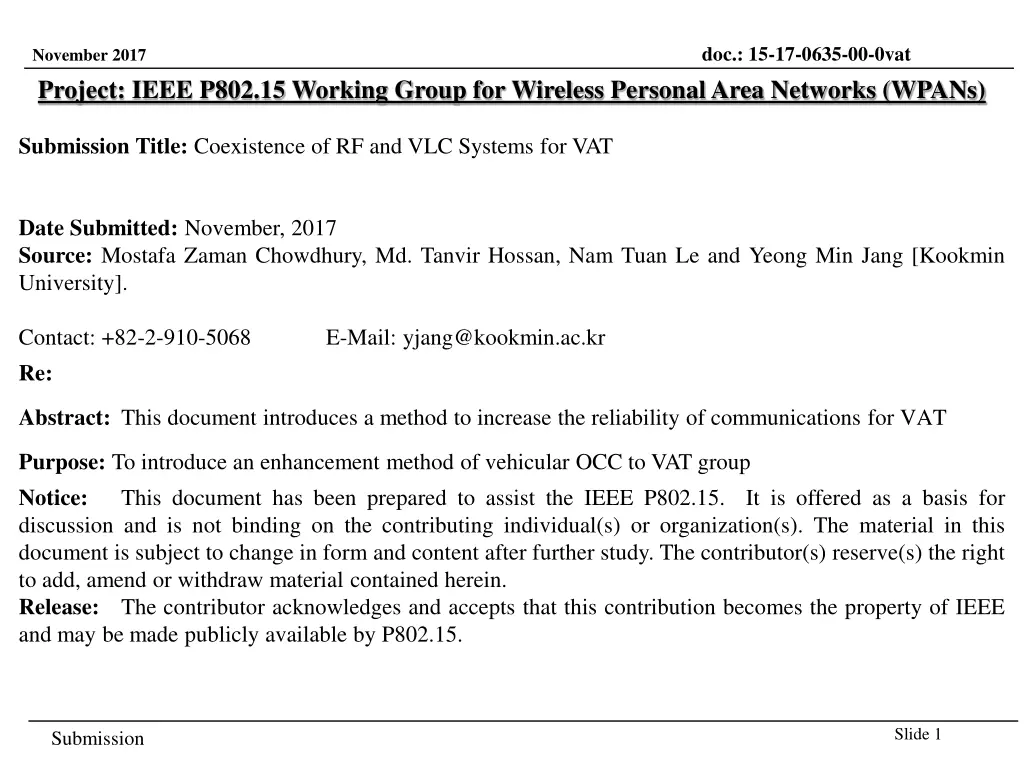
Enhancing Vehicular Communication Reliability
Introducing a method to enhance communications for Vehicular Occupant Communication (VAT) by coexisting RF and Visible Light Communication (VLC) systems, aiming to increase reliability, reduce interference, and improve overall service quality.
Download Presentation

Please find below an Image/Link to download the presentation.
The content on the website is provided AS IS for your information and personal use only. It may not be sold, licensed, or shared on other websites without obtaining consent from the author. If you encounter any issues during the download, it is possible that the publisher has removed the file from their server.
You are allowed to download the files provided on this website for personal or commercial use, subject to the condition that they are used lawfully. All files are the property of their respective owners.
The content on the website is provided AS IS for your information and personal use only. It may not be sold, licensed, or shared on other websites without obtaining consent from the author.
E N D
Presentation Transcript
doc.: 15-17-0635-00-0vat November 2017 Project: IEEE P802.15 Working Group for Wireless Personal Area Networks (WPANs) Submission Title: Coexistence of RF and VLC Systems for VAT Date Submitted: November, 2017 Source: Mostafa Zaman Chowdhury, Md. Tanvir Hossan, Nam Tuan Le and Yeong Min Jang [Kookmin University]. Contact: +82-2-910-5068 Re: E-Mail: yjang@kookmin.ac.kr Abstract: This document introduces a method to increase the reliability of communications for VAT Purpose: To introduce an enhancement method of vehicular OCC to VAT group Notice: This document has been prepared to assist the IEEE P802.15. It is offered as a basis for discussion and is not binding on the contributing individual(s) or organization(s). The material in this document is subject to change in form and content after further study. The contributor(s) reserve(s) the right to add, amend or withdraw material contained herein. Release: The contributor acknowledges and accepts that this contribution becomes the property of IEEE and may be made publicly available by P802.15. Slide 1 Submission
doc.: 15-17-0635-00-0vat November 2017 Contents Why Coexistence of RF and VLC? Coexistence of RF/VLC at Car Reliability Improvement Conclusion Slide 2
doc.: 15-17-0635-00-0vat November 2017 Why Coexistence of RF and VLC? RF creates huge interferences for each other Optical spectrum is promising solution to extend the wireless spectrum Visible light communication (VLC) provides very high data rate communication along with illumination VLC can maintain very small level or no interference VLC cannot provide long distance communication as well as cannot support good mobility Coexistence of these technologies can provide benefit of both Slide 3
doc.: 15-17-0635-00-0vat November 2017 Coexistence of RF/VLC at Car RF as the backhaul network VLC as access network Increases the quality of connection Increases the reliability of connections Slide 4
doc.: 15-17-0635-00-0vat November 2017 Why Coexistence of RF and VLC? Coexistence of RF and OWC ensures the ultra-high reliability level Slide 5
doc.: 15-17-0635-00-0vat November 2017 Conclusions OWC is promising solution of 5G and beyond VLC can provide communication as well as illumination Both the RF and VLC has advantages and limitations Coexistence of both the technologies can overcome the limitations It will reduce interference, increase spectral uses, and increase overall quality of service. Slide 6


